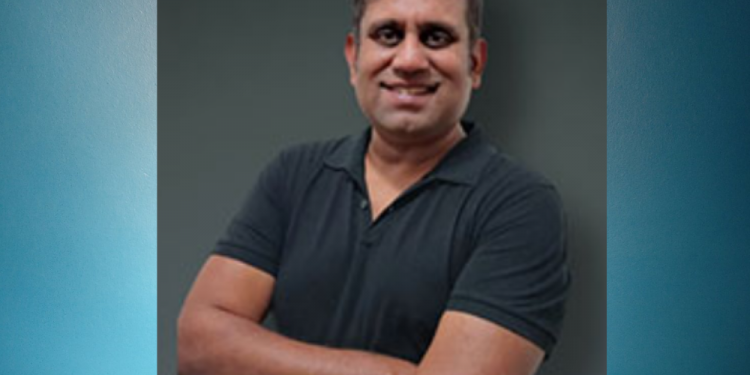Prashant Govindan- a very, very familiar name to the industry ranks in India and beyond; a name that doesn’t need an introduction! One of the most dynamic industry champions in the contemporary AV world, Prashant has been a sort of a brand in itself- having built brands and benefits to both makers and takers.
After what most people see as demanding role(s) at high echelons, Prashant took a gap, and made a re-entry in a blended format! Of a Representative of MNC brands, with Generation AV, and an Advisor & Independent Consultant in his own right.
A tete-a-tete with the man has always been an insightful journey, and this one is yet another. SIAsia shares it for its readers.
……………………………………………………..
SIAsia: Post-Harman-sabbatical, we see you in a blended format. How would you want to put that?
PRASHANT: After working for HARMAN for almost eight years, and a total of almost 16 years in the AV industry, which flew by in a flash, I wanted to explore my creative and entrepreneurial side. This coincided with the onset of the pandemic which was a blessing in disguise. I got ample time to think; think about the industry; the present and the future, and how I could value add with all the experience of working for two of the industry leaders (HARMAN and Biamp Systems) behind me.
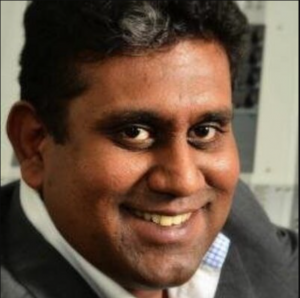 My background in technology, both electronics and computers, added with the exposure to domestic and international markets has helped me with unique perspectives, not just in understanding the application areas but also the current problems we are trying to solve. Not surprisingly, I find myself offering advice to manufacturers, end-users and even to integrators and designers.
My background in technology, both electronics and computers, added with the exposure to domestic and international markets has helped me with unique perspectives, not just in understanding the application areas but also the current problems we are trying to solve. Not surprisingly, I find myself offering advice to manufacturers, end-users and even to integrators and designers.
SIAsia: What is that critical value-add that you are aiming through this blended role, if I can call it that way?
PRASHANT: My value-add has always been the ability to bridge the needs of end-users with relevant technology solution(s). This often meant finding simple, elegant solutions for everyday problems; unclutter, and simplify solutions using technology. That’s one.
Over the years, I have been fortunate to have a reasonably good network of friends and well-wishers, not just in India but across the world. My ability to transcend cultural barriers and connect with people across levels has helped the way I could create the value adds I intended.
Also, that I have set-up and managed some of fastest growing organisations in India, it gave a very unique perspective on India-specific problems, mindset and solutions that technology could bring in.
All that combined to stand me with a good understanding of issues that people commonly face, and how could I help them solve those things.
SIAsia: What lacking(s) did you notice for that matter, and how you ideate to plugging them in?
PRASHANT: I think that I am– therefore able to offer avenues for manufacturers, distributors and integrators who want to crack the India puzzle. Understanding of cultures, specific mindsets and thereby offering solutions for some of these problems has been my forte.
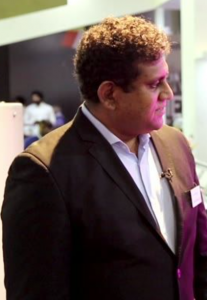 I think technology, especially AV, can be an enabler in many ways in the vast hinterland of India. Many manufacturers make the mistake of thinking that India exists only in the big cities of Mumbai, Delhi, Bangalore etc. This cannot be further away from the truth. Any manufacturer wanting to succeed and grow in India, must understand India from the deep- the hinterland of small towns, villages, and even hamlets. This is where the growth is happening now, and will continue for the next couple of decades.
I think technology, especially AV, can be an enabler in many ways in the vast hinterland of India. Many manufacturers make the mistake of thinking that India exists only in the big cities of Mumbai, Delhi, Bangalore etc. This cannot be further away from the truth. Any manufacturer wanting to succeed and grow in India, must understand India from the deep- the hinterland of small towns, villages, and even hamlets. This is where the growth is happening now, and will continue for the next couple of decades.
SIAsia: How do you look at business in AV in the emerging Post-lockdown times? – we don’t call it post-pandemic now, anyway…
PRASHANT: I think business will pick up to pre-pandemic levels and will surge initially because there was hardly any consumption and infrastructure being built during the lockdowns. The latent demand will cause this initial surge, followed by a strong growth phase. This will primarily be fuelled by both public and private funding into creating more avenues for learning, collaboration and also media and entertainment.
SIAsia: What segment of AV you see as most promising, and challenging?
PRASHANT: e-healthcare and education followed by corporate, retail and hospitality will be the most promising. Once events resume at full strength, we will see several large concerts and live music events also happen. We learnt during the pandemic that access to affordable healthcare is most paramount. We also learnt that telemedicine is not just a fancy term that we throw into presentations, but a very real valuable application of collaboration technologies. Education has seen a sea change in the way content is produced, disseminated and consumed, especially in the absence of physical classrooms. This concept is going to get strengthened also because of the plethora of investment being made into these industries. We will most likely see more remote classrooms, satellite education centers and the true unlocking of the potential of remote learning happening very soon. AV will play a central role in both these sectors.
While we will see strong growth in the other sectors as well, especially with WFH becoming an accepted and regular mode of working. Hybrid workplaces, with offices, and other work spaces will coexist.
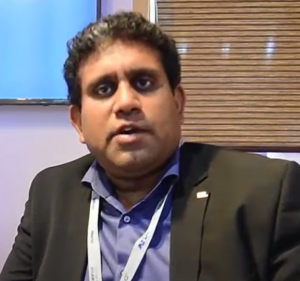 In terms of challenges, I see the supply side and logistics posing huge challenges. The sudden surge in demand across the world has caused severe strain on supply chain. Shortages in critical components and raw material have been leading to huge cost escalation in manufacturing. International logistics is also a challenge due to shortage of shipping containers and increase in demand for consumer goods. This would, however, ease out in the next 12-18 months, as we learn to readjust and recalibrate.
In terms of challenges, I see the supply side and logistics posing huge challenges. The sudden surge in demand across the world has caused severe strain on supply chain. Shortages in critical components and raw material have been leading to huge cost escalation in manufacturing. International logistics is also a challenge due to shortage of shipping containers and increase in demand for consumer goods. This would, however, ease out in the next 12-18 months, as we learn to readjust and recalibrate.
SIAsia: How would you want leverage the promising areas?
PRASHANT: I think there is a lot of potential in the education sector, especially in K-12. Several State governments have announced setting up of e-classrooms that not only incorporate audio visual aids in the classroom, but will also need to be networked through AV. This is a huge area. I think we as an industry should promote and encourage a public policy making in this area. This can happen through industry bodies like AVIXA and other organisations.
The other promising area is the oft-heard Internet of Things (IoT) which has seen a lot of interest from customer organisations wanting to integrate and automate everything from parking to toilet cleaning! The real takeaway here would be in drawing out analytics and the consequent cost savings. This is an interesting area that will continue to grow.
SIAsia: The make-in-India/Made-in-India thrust appears to have lost its COVID-gifted opportunity against the Chinese domination…your take on it?
PRASHANT: Make in India has always been a pipedream and in my experience, it’s been half-baked and often jingoistic based on the political dispensation of the day. In principle, it’s indeed a brilliant idea, and is always relevant- with or without pandemic. As with anything that is so massive, the implementation leaves a lot to be desired.
For true value to be unlocked in this initiative, in true public-private partnership model, the government should encourage technocrats to set-up small to medium scale industrial production units, provide interest-free loans with long repayment cycles for plant and machinery, industrial units at low cost of ownership, besides providing sops on taxes, electricity, water supply and labour etc. This will spur several entrepreneurs to set-up units to actually make in India.
In AV alone, I can think of several opportunities that we could help with driving domestic manufacturing, not just final assembly and testing as it exists today.
SIAsia: Do you think India does possess the capability and the drive? or how?
PRASHANT: We are a nation of extremely talented and driven individuals. We find success in adversity, and we are a hotbed of innovation and ideas. Despite all the challenges we find desi “jugaads” (workarounds) to common everyday challenges. So, talent and initiative is definitely not in short supply. What we need is support in terms of capital and infrastructure.
SIAsia: What you think the best India can do- now, or say in the next five years?
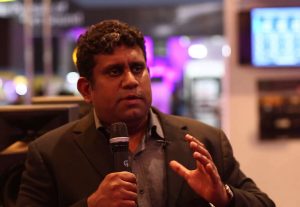 PRASHANT: India is already innovating and doing its best in terms of services. Our talent pool is very young, very creative and is bursting with energy. This demographic dividend that we often talk about is our biggest strength. What we need is solid vocational training especially in technology and engineering. Rather than focus on just churning out graduates, engineering and management institutes should partner with industry early on to ensure students get appropriate exposure. Often, the curricula is so out-dated that industry has to invest in training new recruits all over. This is grossly inefficient and a closer academia-industry partnership would help in ensuring that talent is readily employable. In terms of policy making, as mentioned above encouragement of young entrepreneurs is required in manufacturing.
PRASHANT: India is already innovating and doing its best in terms of services. Our talent pool is very young, very creative and is bursting with energy. This demographic dividend that we often talk about is our biggest strength. What we need is solid vocational training especially in technology and engineering. Rather than focus on just churning out graduates, engineering and management institutes should partner with industry early on to ensure students get appropriate exposure. Often, the curricula is so out-dated that industry has to invest in training new recruits all over. This is grossly inefficient and a closer academia-industry partnership would help in ensuring that talent is readily employable. In terms of policy making, as mentioned above encouragement of young entrepreneurs is required in manufacturing.
SIAsia: Do you see a connect between India’s polity and the drive on make/made-in-India thing? or How?
PRASHANT: Definitely the intent exists and I don’t think there is lack of initiative as well. The disconnect we feel is the actual implementation on the ground. For example, what does an entrepreneur do if he/she has a solid business plan for setting up manufacturing? How does one go about setting up a plant? What are the approvals, licences etc. required? We talk about single window clearance? Where is that single window? Intent has to translate into action at both ends. That will drive make in India.











